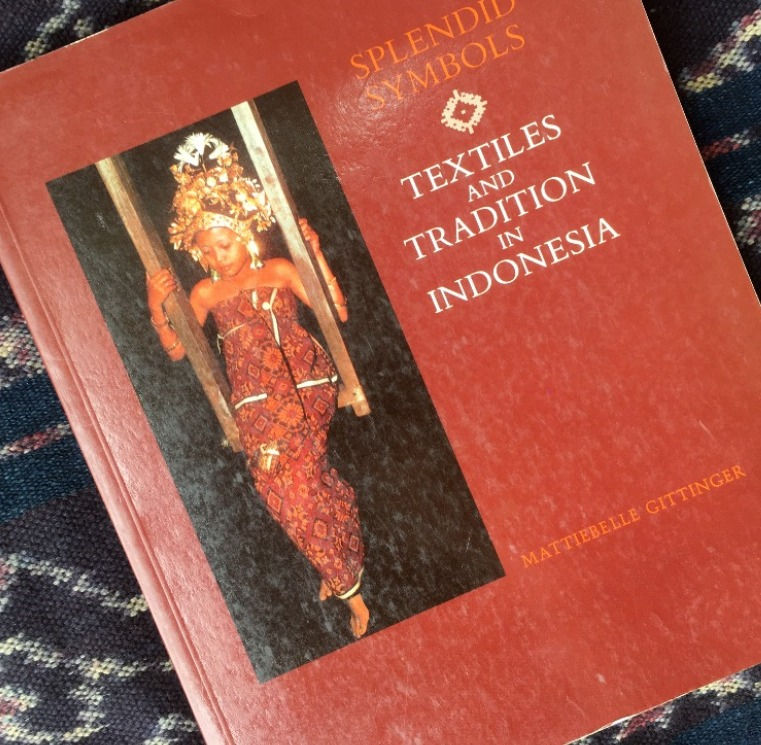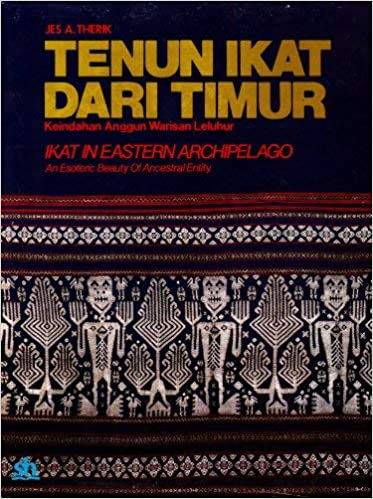Several scholars have remarked on the absence of a serious study about the textiles of Alor Regency, Indonesia. Alor textiles have appeared in a handful of publications about Southeast Asian and Indonesian textiles. Fortunately, the authors considered Alor textiles worthy of inclusion when showcasing this diverse heritage, but they provide little information. Generally, the details about Alor textiles originate from indirect sources rather than direct contact with the weavers of Alor Regency.
The cultures of Alor Regency, Indonesia, were the subject of anthropological studies in the 1920s and 1930s. German ethnographer Ernst Vatter spent eight months documenting different cultures of the Solor and Alor Archipelagos from 1928-1929. He collected wood carvings, plaited items, beaded jewelry, and other items including a handful of textiles from Pantar and Alor for the present-day Museum der Weltkulturen, or Museum of World Cultures, in Frankfurt, Germany. Vatter published his fieldwork in Ata Kwan (1932).
American anthropologist Cora Du Bois researched an Abui community on Alor in 1937-1939. Her book, The People of Alor: A Social-Psychological Study of an East Indian Island, was published in 1944. The Abui do not weave; Du Bois, thus, did not document any weaving or textile traditions while in Alor.

Interest in Indonesian textiles intensified in the 1970s, and the first exhibit, Textiles and Tradition in Indonesia, occurred at the Textile Museum, Washington DC, in 1979. Curator Dr. Mattiebelle Gittinger remarked in this seminal work that few scholars considered Indonesian textiles worthy of serious research before this exhibition. Gittinger did not include Alor textiles in the catalog but stated that she could only feature some Indonesian textiles due to publication budget constraints.
Publications highlighting the weaving of Indonesia and the region of Southeast Asia were absent until 1988. Handwoven Textiles of South-east Asia written by Sylvia Fraser-Lu features a full-color image of a man's shawl or keng limi geweng from the Wersing-speaking Taruamang people of Kolana, East Alor.

One Indonesian-language publication, entitled Tenun Ikat Dari Timur: Keindahan Anggun Warisan Leluhur or Ikat in Eastern Archipelago: An Esoteric Beauty of Ancestral Entity written by Jes Therik (1989) presents three textiles from East Alor. The book’s focus is ikat textiles, but these weavings produced by Wersing-speaking Taruamang weavers are not decorated with warp ikat but with complementary warp, slit tapestry, and weft twining techniques.
In 1990 Robyn Maxwell published a comprehensive volume devoted to textiles of Southeast Asia entitled, Textiles of Southeast Asia - Tradition, Trade, and Transformation. Again, Alor textiles receive a brief mention in a book covering textiles of an entire region. Maxwell refers to the use of supplementary warp technique in Alor and the import of textiles from Lembata to non-weaving groups of Alor but does not go into detail about the textiles of Alor Regency, Indonesia.
An exception to the scant coverage of Alor and Pantar textiles is Woven Messages – Indonesian Textiles Tradition in Course of Time, written by Brigitte Khan Majlis (1991). The exhibit and its accompanying catalog feature textiles from the private collection of the Luths of Hanover and the Roemer Museum in Hildesheim, Germany. Majlis devoted an entire chapter on Alor and Pantar illustrated with ten textiles and some photographs taken in situ. In-depth details are still missing, desired.




























































Comments